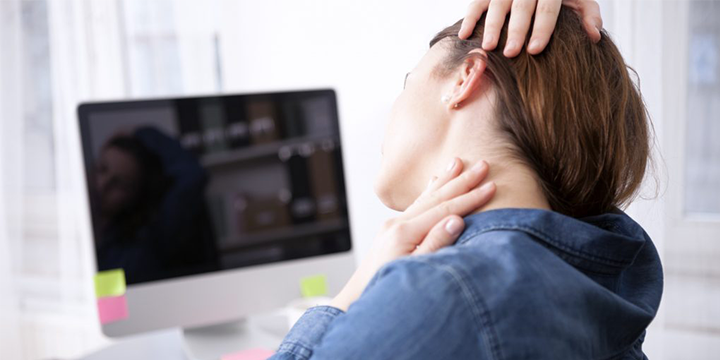More than 1 million people in India every year suffer from Ankylosing Spondylitis. It is a long term chronic disease that affects your spine and pain appears in your lower back gradually especially in the morning.
Here is all you want to know about how a simple low back pain can aggravate and lead to ankylosing spondylitis.
Q. What is ankylosing spondylitis?
A. A type of autoimmune progressive disease that affects the spine.
Q. What are its symptoms?
A. Symptoms include:
- Pain and stiffness from back up to the neck
- Development of a stooped-over posture due to stiffness of spine
- Mobility of neck is compromised
- Tendonitis (inflammation of the tendon) may cause pain and stiffness in the area behind or beneath the heel (secondary)
Q. Who Is Affected by ankylosing spondylitis?
A. It affects about 0.1% to 0.5% of the adult population. Although ankylosing spondylitis can occur at any age, spondylitis most often strikes men in their teens and 20s. It is less common and generally milder in women. Ankylosing spondylitis can cause an overgrowth of the bones, which may lead to abnormal joining of bones, called “bony fusion.” Fusion affecting bones of the neck, back, or hips may impair a person’s ability to perform routine activities. Fusion of the ribs to the spine or breastbone may limit a person’s ability to expand his or her chest when taking a deep breath.
|
Ages affected
|
Occurence
|
|
0-5
|
Very rare
|
|
6-18
|
Rare
|
|
19-40
|
Common
|
|
41-60+
|
Rare
|
Q. How is ankylosing spondylitis diagnosed?
A. Diagnosis is done after examination of:
- Symptoms
- Findings of a physical exam
- X-rays of the back and pelvis
- Measurements of expansion and contraction of the chest wall
- Results of lab tests
Q. What is the treatment procedure?
A. The goal of physiotherapy treatment is
- To manage and bring down the pain
- To bring down spinal stiffness
- To maintain spinal mobility
- To prevent vertebral fusion
- Posture correction
- Deformity prevention
- To maintain BADL(Basic Activities of Daily Living)
Q. What are the Do’s and Don’ts of ankylosing spondylitis?
A. DO’s & Don’ts of ankylosing spondylitis:
- Smoking along with other effects aggravates ankylosing sponsylitis by hampering your breathing
- While sleeping, do not rest your legs on a pillow or support
- Avoid sudden movement and hyperactivity
- While sleeping or lying down, make sure your back is straight
- Soft mattresses are also not recommended for those with AS. Use of firm mattress may prove beneficial
- Use the right kind of chairs and tables that will keep you from bending or stooping
- Avoid sitting on chairs without arms or back support
- Make a habit of standing upright in front of a mirror
Q. Which areas are the most affected in ankylosing spondylitis?
A. The highly affected areas are:
- The pain starts along the sacroiliac joints (joint between the base of your spine and your pelvis) and spreads downwards till the lower vertebrae
- Along the back of your heel
- The cartilage between breastbone and ribs
- Hip and shoulder joints
Q. When is it time to see a doctor?
A. Gradual appearance and increase of low back pain that worsens at night to the extent of awakening you from sleep might be a wake up call for you to seek medical attention. Exercising may help reduce the pain for a while but worsens with rest.
Q. How does physiotherapy help in controlling Ankylosing Spondylitis?
A. Physiotherapy helps in managing AS by:
- Spinal extension exercises
- Spinal mobilization and manipulation
- Strengthening of core muscles of spine
- IFT and UST with Phonophoresis for reduction of para-spinal spasm, pain and stiffness
Proper sleep and practising the correct walking posture can help you cope with AS and reduce pain and stiffness.Proper exercises for reducing back pain also helps control Ankylosing spondylitis
If you need further help or advice, give us a call. TriBeCa Care is happy to be by your side. Request a callback or Call us at + 913366064208.
Email us at enquiry@newwpsite.tribecacare.com
Information Sources:
https://www.niams.nih.gov/health_info/ankylosing_spondylitis/#m
http://www.mayoclinic.org/
http://www.webmd.com/

